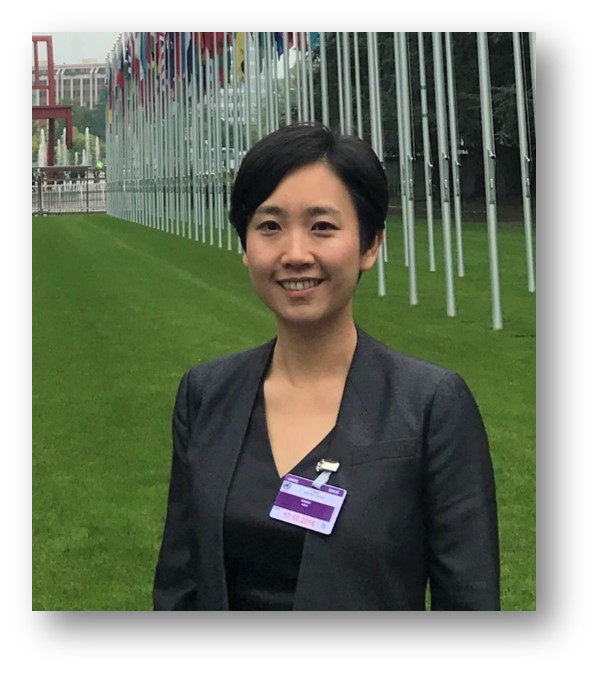Conference Program
(Friday, July 15, or +1: Saturday, July 16)
Zoom Link (psw: 629067)
| PDT Pacific Time |
EDT Eastern Time |
BST London Time |
GMT+8 Beijing Time |
|
|---|---|---|---|---|
| 07:20-07:30 | 10:20-10:30 | 15:20-15:30 | 22:20-22:30 | Opening Remarks |
| 07:30-10:00 | 10:30-13:10 | 15:30-18:10 | 22:30-01:10 | Session 1 Invited Talks and Research Paper |
| 07:30-08:10 | 10:30-11:10 | 15:30-16:10 | 22:30-23:10 | Invited Talk 1: Weiwei Wang |
| 08:10-08:50 | 11:10-11:50 | 16:10-16:50 | 23:10-23:50 | Invited Talk 2: Wallace Chen |
| 08:50-09:30 | 11:50-12:30 | 16:50-17:30 | 23:50-00:30 | Invited Talk 3: Trevor Cohn |
| 09:30-10:10 | 12:30-13:10 | 17:30-18:10 | 00:30-01:10 +1 | Invited Talk 4: Juan Pino |
| 10:10-10:30 | 13:10-13:30 | 18:10-18:30 | 01:10-01:30 +1 | Research paper: Over-Generation Cannot Be Rewarded: Length-Adaptive Average Lagging for Simultaneous Speech Translation [slides] Sara Papi, Marco Gaido, Matteo Negri, Marco Turchi |
| 10:30-18:30 | 13:30-21:30 | 18:30-02:30 | 01:30-09:30 +1 | Break |
| 18:30-20:10 | 21:30-23:10 | 02:30-04:10 +1 | 09:30-11:10 +1 | Session 2: Shared Task |
| 18:30-18:45 | 21:30-21:45 | 02:30-02:45 +1 | 09:30-09:45 +1 | Findings of the Third Workshop on Automatic Simultaneous Translation [slides] |
| 18:45-19:00 | 21:45-22:00 | 02:45-03:00 +1 | 09:45-10:00 +1 | BIT-Xiaomi’s System for AutoSimTrans 2022 [slides] Mengge Liu, Xiang Li, Bao Chen, Yanzhi Tian, Tianwei Lan, Silin Li, Yuhang Guo, Jian Luan, Bin Wan |
| 19:00-19:15 | 22:00-22:15 | 03:00-03:15 +1 | 10:00-10:15 +1 | USST’s System for AutoSimTrans 2022 [slides] Zhu Jia Hui, Yu Jun |
| 19:15-19:30 | 22:15-22:30 | 03:15-03:30 +1 | 10:15-10:30 +1 | ZXN’s Simultaneous Translation System at NAACL 2022 [slides] Zecheng Li, Yue Sun, Haoze Li |
| 19:30-19:45 | 22:30-22:45 | 03:30-03:45 +1 | 10:30-10:45 +1 | System Description on Third Automatic Simultaneous Translation Workshop [slides] Zhang Yiqiao |
| 19:45-20:00 | 22:45-23:00 | 03:45-04:00 +1 | 10:45-11:00 +1 | End-to-End Simultaneous Speech Translation with Pretraining and Distillation: Huawei Noah’s System for AutoSimTranS 2022 [slides] Xingshan Zeng, Pengfei Li, Liangyou Li, Qun Liu |
| 20:00-20:10 | 23:00-23:10 | 04:00-04:10 +1 | 11:00-11:10 +1 | Closing Remarks |
Invited Talk 1 by Weiwei Wang [slides]

Title: Bridging the Gap: CSE-Interpreting Scales as a Measuring Instrument for Interpreting Training
Abstract: With more than 500 undergraduate and postgraduate degree programs in translation and interpreting (T&I) being launched over the past decade, interpreter training and education has been developing rapidly in China. This creates a huge demand for testing and assessment of interpreting in the educational context. To provide reliable measurement of interpreting competence, the CSE-Interpreting Scales were unveiled in 2018 after 4 years of government-funded research and validation among 30,682 students, 5,787 teachers, and 139 interpreting professionals from 28 provinces, municipalities, and regions in China. In 2022, the scales were developed from conceptual descriptors to an AI-based application to assist in interpreting training. What are the CSE-Interpreting Scales? What are the scenarios and functions of the scales in interpreting training? I will address these questions in my talk by elaborating on two scales and discussing possible applications of the scales in interpreting teaching, learning and assessment.
Abstract: With more than 500 undergraduate and postgraduate degree programs in translation and interpreting (T&I) being launched over the past decade, interpreter training and education has been developing rapidly in China. This creates a huge demand for testing and assessment of interpreting in the educational context. To provide reliable measurement of interpreting competence, the CSE-Interpreting Scales were unveiled in 2018 after 4 years of government-funded research and validation among 30,682 students, 5,787 teachers, and 139 interpreting professionals from 28 provinces, municipalities, and regions in China. In 2022, the scales were developed from conceptual descriptors to an AI-based application to assist in interpreting training. What are the CSE-Interpreting Scales? What are the scenarios and functions of the scales in interpreting training? I will address these questions in my talk by elaborating on two scales and discussing possible applications of the scales in interpreting teaching, learning and assessment.
Invited Talk 2 by Wallace Chen [slides]

Title: Parsing Techniques in Simultaneous Interpreting and Their Implications for Automatic Simultaneous Translation
Abstract: Human interpreters employ a wide variety of parsing techniques as dynamic, on-demand strategies to cope with linguistic and communicative challenges associated with simultaneous interpreting (SI). These techniques may include, but not limited to, paraphrasing, generalizing, normalizing, implicitating, explicitating, glossing, shining-through, anticipating, chunking, segmenting, conjoining, etc. -- all prompted by the interpreter's level of experience, cognitive load, and a desire to bridge communicative gaps in the interpreting process. While the technology of automatic simultaneous translation relies on a large set of purpose-built training data to construct a coherent translation, human interpreters make calculated and informed decisions, often on a case-by-case basis, when applying the afore-mentioned parsing techniques for SI. This presentation will focus on the somewhat volatile nature of simultaneous interpreting by exploring how and when the various SI techniques are applied, and how they might be able to shed new insights on the development of automatic simultaneous translation systems.
Abstract: Human interpreters employ a wide variety of parsing techniques as dynamic, on-demand strategies to cope with linguistic and communicative challenges associated with simultaneous interpreting (SI). These techniques may include, but not limited to, paraphrasing, generalizing, normalizing, implicitating, explicitating, glossing, shining-through, anticipating, chunking, segmenting, conjoining, etc. -- all prompted by the interpreter's level of experience, cognitive load, and a desire to bridge communicative gaps in the interpreting process. While the technology of automatic simultaneous translation relies on a large set of purpose-built training data to construct a coherent translation, human interpreters make calculated and informed decisions, often on a case-by-case basis, when applying the afore-mentioned parsing techniques for SI. This presentation will focus on the somewhat volatile nature of simultaneous interpreting by exploring how and when the various SI techniques are applied, and how they might be able to shed new insights on the development of automatic simultaneous translation systems.
Invited Talk 3 by Trevor Cohn [slides]

Title: From Simultaneous Translation to Simultaneous Interpretation
Abstract: Simultaneous translation is a highly challenging problem, both for humans and for machines, bringing many additional complexities beyond offline translation. In this talk I will discuss two avenues for advancing research automatic simultaneous translation, encompassing both algorithms and evaluation methodology. First, I will discuss means of improving the realism of models learned from parallel translation data, based on factoring the system into two components: a programmer, which decides when to wait for more input and when to produce translations, and an interpreter, which generates the output tokens. Critically, our method couples the learning of these components, framed as imitation learning, which leads to better simultaneous translation than simply learning a single component, as in prior work. In the second part of the talk, I will revisit a core assumption underlying modern simultaneous translation work, namely the use of parallel offline translation data for evaluation. Instead, I will argue that interpretation data is a better evaluation resource. Interpretation differs substantially from offline translation and includes a range of translation strategies humans to perform this cognitively challenging task in a real-time setting. I will describe a small dataset we curated from the audio and transcripts of European parliament debates. Leading simultaneous translation systems evaluated on this dataset fare quite poorly, relative to standard translation-based evaluation corpora. I will finish by showing how we can adapt existing methods to improve performance on this highly challenging interpretation task.
Abstract: Simultaneous translation is a highly challenging problem, both for humans and for machines, bringing many additional complexities beyond offline translation. In this talk I will discuss two avenues for advancing research automatic simultaneous translation, encompassing both algorithms and evaluation methodology. First, I will discuss means of improving the realism of models learned from parallel translation data, based on factoring the system into two components: a programmer, which decides when to wait for more input and when to produce translations, and an interpreter, which generates the output tokens. Critically, our method couples the learning of these components, framed as imitation learning, which leads to better simultaneous translation than simply learning a single component, as in prior work. In the second part of the talk, I will revisit a core assumption underlying modern simultaneous translation work, namely the use of parallel offline translation data for evaluation. Instead, I will argue that interpretation data is a better evaluation resource. Interpretation differs substantially from offline translation and includes a range of translation strategies humans to perform this cognitively challenging task in a real-time setting. I will describe a small dataset we curated from the audio and transcripts of European parliament debates. Leading simultaneous translation systems evaluated on this dataset fare quite poorly, relative to standard translation-based evaluation corpora. I will finish by showing how we can adapt existing methods to improve performance on this highly challenging interpretation task.
Invited Talk 4 by Juan Pino

Title: Recent Advances in Direct Speech to Speech Translation
Abstract: Speech to speech translation is the task of translating from audio in a language to audio in a different language. Simply combining speech recognition, machine translation and speech synthesis provides a very strong baseline but with some possible drawbacks. We propose to solve the problem in a more direct fashion to potentially provide less error compounding, lower latency and also support translation into unwritten languages or languages without standard writing system. In this presentation, I will describe recent advances on direct speech-to-speech translation, systems with simultaneous capability and that leverage real target speech.
Abstract: Speech to speech translation is the task of translating from audio in a language to audio in a different language. Simply combining speech recognition, machine translation and speech synthesis provides a very strong baseline but with some possible drawbacks. We propose to solve the problem in a more direct fashion to potentially provide less error compounding, lower latency and also support translation into unwritten languages or languages without standard writing system. In this presentation, I will describe recent advances on direct speech-to-speech translation, systems with simultaneous capability and that leverage real target speech.